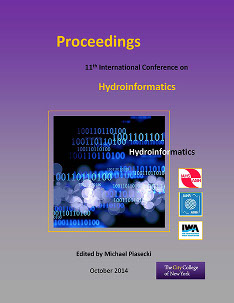Document Type
Presentation
Publication Date
8-1-2014
Abstract
Natural Flood Management (NFM) techniques that include alteration, restoration or use of landscape features, have emerged as a novel way of reducing flood risk in Scotland. NFM aims to reduce the peak flood downstreamincreasing the time available to prepare for flood. Water storage ponds are very effective for this purpose. The aim of the paper is to present findings of a modelling approach to floodinundation and risk assessment, and its application for assessing the effectiveness of wetland storage ponds as NFM measures. The study was undertaken in a rural catchment (Tarland Burn, area ~74 km2) located in Aberdeenshire, north-east Scotland. A one-dimensional numerical model – ISIS was used for assessing the effectiveness of storage ponds. It was developed using a Digital Elevation Model (DEM) based on channel cross-sections. The output was then used as inflow boundary to a two-dimensional hydrodynamic model – Tuflow to develop high resolution flood inundation maps. The model was developed by using a DEM derived from high-resolutionLiDAR. Modelling of an existing storage pond located in the middle of the catchment indicated that there was no significant flow attenuation as a result of the single pond. An additional storage capacity would be required to effectively attenuate the flow especially during the extreme flow events. Model output indicated that significant reduction in thedownstream flood peak is possible only if the pond area is increased -e.g.a five-fold increase in pond area would result in a 25 % decrease in peak flow.A range of flood water storage options in the headwater zone was assessed to minimise flood risks downstream. The flood inundation output products can be effectively visualised using Virtual Landscape Theatre (VLT), which is an interactive viewing environment that can be used for communicating flood risks to a wide variety of stakeholder groups.



Comments
Session R40, Assessment, Prediction, and Management of Flood Events II